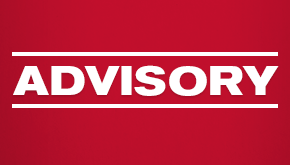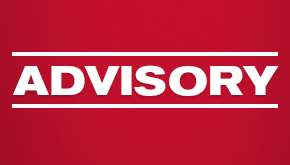The Nuts and Bolts of a Workout in a Pandemic Environment
Workout activity has reached a fever pitch in the wake of the COVID-19 pandemic. Jeffrey A. Wurst provides important tips, recommendations and considerations for secured lenders looking to execute successful workouts with a growing population of distressed borrowers in the current marketplace.
Christmas has not yet arrived, yet workout attorneys are singing “It’s the Most Wonderful Time of the Year.” After the longest boom market in history, the economy came to a sudden stop as a result of the COVID-19 pandemic and the falsely inflated economy, and lenders are peeling back the onion to find that what is inside their loans is not what they thought. The purpose of this article is to address a systematic approach to engaging in a productive workout and how to turn a lose-lose into a win-win.
While some observers might debate whether the economy was falsely inflated, we should all agree that with the assistance of the Paycheck Protection Program and other Small Business Administration support, some suffering businesses have kicked the can down the road and deferred falling into default with their lenders. Even so, many companies have shuttered their doors while others continue to limp on with no realistic prospect of turning the corner in the near future.
The dilemma lenders face now is how to provide accommodations to their distressed borrowers without subjecting themselves to undue risk. Thus, it is time to dust off and update the workout playbook.
The first step should be to collect information and look at the loan with a fresh set of eyes, but there’s more than that. Here are the most important steps, considerations and recommendations for a successful workout in the current environment.
Document Review
Conduct a legal review of the loan documents and perfection filings. Assure that the agreement was properly executed; the collateral you expect is properly identified in the security agreement (or section of a credit agreement); that your rights, upon default, are what you would expect them to be; and that you (or your servicing agent) are in possession of the original loan documents.
Updated Searches
Run a Uniform Commercial Code search to confirm that you are in a first position and that your lien has not lapsed. The search also will detect whether any unknown junior liens were filed. Note that it is becoming common to find that a distressed borrower has taken one or more merchant cash advance loans and that you may now have a junior lienholder exercising rights against your collateral. Obtain current tax lien and litigation searches. Let’s hope you do not find any unpleasant surprises. If you have a trademark or other intellectual property as collateral (even as boot collateral), run a search to assure that your filings are in order.
Collateral Assessment
Take a close look at your borrower’s detailed accounts receivable aging. Do you have the contact information you will require should you need to put account debtors on notice? Are there any suspect entries on the aging? Be sure to perform verifications. Are credits and chargebacks properly posted? Obtain a new inventory appraisal and assure that the appraiser is adequately confirming the counts. Equipment appraisals also should be obtained, as values may have changed during the pandemic.
Cash Flow Budget
Have your borrower prepare a rolling cash flow budget. Is it reasonably reliable and not a “pie in the sky” prayer for better times? Watch out for straight line income items and whether they are realistic. Monitor the budget along with your borrower to assure that it is meeting reasonable benchmarks and recast the budget as the benchmarks are missed.
Defaults
What are the defaults? Are they reasonably the result of the pandemic or do you envision any foul play? Was the company in trouble prior to the pandemic? Was that trouble exacerbated by the pandemic? Has the borrower been open and candid with you about the problems, or are they coming to you after they have dug themselves into a ditch? That will affect your willingness to provide accommodations.
Approach
You need to decide whether to monitor the problem and see if things improve, work with the borrower in fixing the problem or exit the facility. In each instance you need to revisit your exit strategy and assess whether it is still viable. Is your first loss your best loss? Can the borrower make a turn and improve, and are you willing to support it? What needs to be reported to regulators and can you keep the credit even if it improves?
Workout Agreement
Here comes the game plan. Get into a workout/forbearance agreement. Call it anything you want, but it is what it is. Don’t let the title get in the way if the borrower insists that it cannot be called what you want it called. Be prepared to make an accommodation even if you just want to get out and get out fast.
The most important item in the forbearance agreement is the release that the borrower will give you. Even if you believe that you have not done anything that requires a release, you will find the release invaluable should the relationship break down. Should the borrower ultimately bring an action against you (directly or by way of a counterclaim), the release will save you tons of money in defending yourself. If the borrower will not sign a release (inconspicuously included amongst the litany of other items), why make any accommodation? I have often said that if the lender has done nothing wrong, the borrower should have no problem signing a release. If the borrower thinks the lender has done something wrong and refuses to give the lender a release, why should the lender provide the borrower with any accommodation? The release is the main reason to assist a borrower — especially one you want to exit. It will ease the pain when you ultimately do.
Keep the borrower to short benchmarks. Try to keep the first forbearance agreement to a period not longer than a month. Go month by month until you are comfortable with longer periods. Don’t expect the problems to be cured too quickly, but if progress is being made (even if the losses are stabilizing or slowing down), feel free to continue.
Watch the credit closely. Don’t trust your borrower. Remember that you never get defrauded by someone you distrust. We always hear, “How could he do that to me? He was my friend.” Know your customer and don’t allow yourself to get too close.
Introduce or recast financial covenants. If you want an exit, build in time for the borrower to exit. Will another lender advance enough to take you out? Are you willing to provide a discount? If so, structure the discount based on a reasonable date for the payoff. Condition the payoff on that date or it is lost. Extensions may be given but only at your discretion after the borrower has demonstrated progress (or at least substantial credible effort) in securing a replacement lender.
Engage the guarantors. If they have assets, they will be very motivated to work with you — even if their only asset is their home and it is fully mortgaged. They still don’t want their family living on the street.
Of course, the major consideration is whether to fund or not and whether to forbear or pull the plug. These are difficult decisions but be sure not to make them out of anger or through any irrational considerations. Again, it is best to get to that first forbearance agreement and get a release. That way there is a demarcation line between everything that occurred prior to the forbearance agreement and whatever happens after, which is not subject to the release.
Fees
Don’t forget that you are entitled to fees (and they may be significant) for the privilege of deferring. If the borrower has the funds (or collateral), then this is a price for the accommodations you may give. But even if the funds are not available, it is still wise to charge the forbearance fee and have it forgiven if you are paid out (even at a reduction).
Temper
The final recommendation is to make sound business decisions and not to act out of spite. If you retaliate for mistreatment by your borrower — even if you are justified — there is a greater chance that you will be defending yourself against a frivolous lawsuit. Better to be rational and stay to the high ground.



































